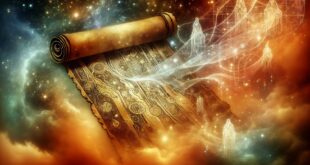Beneath the allure of manicured lawns lies a hidden environmental toll: excessive water consumption and chemical dependency threaten ecosystems, while biodiversity suffers. Exploring alternatives like permaculture and native plantings can transform these green spaces into vibrant ecosystems. Discover how reimagining lawns can lead to a sustainable, interconnected future with nature.
Read More »Sustainable Sanctuaries
How to Build a Passive Solar Greenhouse for Year-Round Growing
Crafting a passive solar greenhouse is more than just design; it's about harmonizing with nature's rhythms to optimize light, space, and self-reliance. South-facing orientation, effective thermal mass, and strategic ventilation transform your greenhouse into a nurturing powerhouse. Material choices, from frame to insulation, play essential roles, fostering a year-round sustainable food ecosystem. Embrace nature's wisdom in creating a self-sufficient oasis—a testament to balance and depth in our connection with the earth.
Read More »The Role of Hempcrete in Sustainable Home Construction
Hempcrete is a revolutionary building material merging sustainability with functionality. Made from hemp hurds, lime, and water, it offers a breathable, energy-efficient alternative to traditional construction materials. Hempcrete regulates indoor humidity, impacts carbon footprint positively by absorbing CO2, and reduces reliance on artificial energy systems. Despite challenges like regulatory hurdles and supply chain issues, its potential continues to grow as the industry embraces sustainable practices. As eco-consciousness rises, could hempcrete become a cornerstone of future construction, reflecting deeper environmental values?
Read More »Underground Homes: The Ultimate Sustainable Shelter?
Step into the world of earth-sheltered homes, where harmony with nature meets groundbreaking design. Discover how these innovative structures offer energy efficiency, disaster resilience, and a tranquil escape from urban chaos. From Switzerland’s lush Earth House Estate to the Hobbit House in Montana, these eco-friendly refuges blend seamlessly with their surroundings, showcasing the ancient wisdom of coexisting with the Earth. Embrace the allure of underground living and explore a sustainable lifestyle that nurtures a profound bond with our natural habitat.
Read More »Is a Shipping Container Home a Good Idea for Sustainable Living?
Shipping containers are transforming into eco-friendly homes, offering durability, cost-effectiveness, and architectural flexibility. These structures reduce construction waste and carbon emissions, aligning with sustainable living ideals. Challenges like insulation, zoning laws, and modifications arise, but the allure of efficient, creative, and sustainable housing remains strong. Dive into the innovative world of container homes where tiny living meets environmental consciousness.
Read More »The Real Reason Cities are Banning Off-Grid Living
Off-grid living taps into a yearning for simplicity and autonomy, driven by a desire to escape modern dependencies and the complexities of urban life. While it offers the allure of independence, it also poses challenges in balancing personal freedom with communal responsibilities and environmental sustainability. As government regulations and city infrastructures grapple with this evolving trend, the dialogue between self-sufficiency and societal needs becomes crucial. How can off-grid enthusiasts and policymakers find harmony in this unconventional pursuit of freedom?
Read More »Urban Mushroom Cultivation: Growing Edible Fungi at Home
Unlock the magic of urban mushroom farming by discovering how diverse varieties like Oyster, Shiitake, and Lion's Mane can thrive in your home. Transform any corner of your living space into a sustainable garden, fostering a deeper connection with nature through these fascinating fungi. Dive into this rich tapestry of taste, health, and environmental impact to see which mushrooms will dance gracefully in your urban patch.
Read More »The Forgotten Science of Rammed Earth Homes
Rammed earth construction, an ancient yet enduring technique, showcases humanity's resourcefulness by molding the ground beneath us into robust, sustainable structures. Used in historic landmarks like the Great Wall of China, it leverages local materials for eco-friendly, thermally efficient homes. As modern builders seek sustainable methods, this age-old wisdom offers a harmonious blend of durability and environmental respect, creating homes that echo nature's artistry while providing practical benefits. Could this technique be the future of sustainable housing, merging timeless craftsmanship with contemporary needs?
Read More »How to Legally Build an Earthship in a Restricted Area
Delving into zoning laws unveils the invisible lines defining development, crucial for off-grid housing dreams. Imagine navigating these legal complexities as both a roadmap and rulebook. Discover magic within these codes—legal loopholes that might allow more than meets the eye. Building permits, like untangling holiday lights, necessitate patience and precision, transforming architectural visions into reality. Sustainable materials offer a creative dance, blending eco-friendliness and compliance. Ultimately, building an earthship isn't just constructing walls; it's crafting a beacon of resilience, intertwining knowledge with nature's harmony.
Read More »Why Suburban Sprawl is a Hidden Threat to Sustainability
Suburban sprawl, often seen as the ideal of modern living, hides significant impacts on ecosystems and community dynamics. The expansion affects nature, water cycles, and local infrastructure while fragmenting habitats and weakening community bonds. However, the concept of smart cities offers a promising solution, emphasizing sustainable urban planning that integrates nature and community interaction. Can redesigning our neighborhoods create a more harmonious balance with nature and each other?
Read More » DS Haven In Light Of Things
DS Haven In Light Of Things









